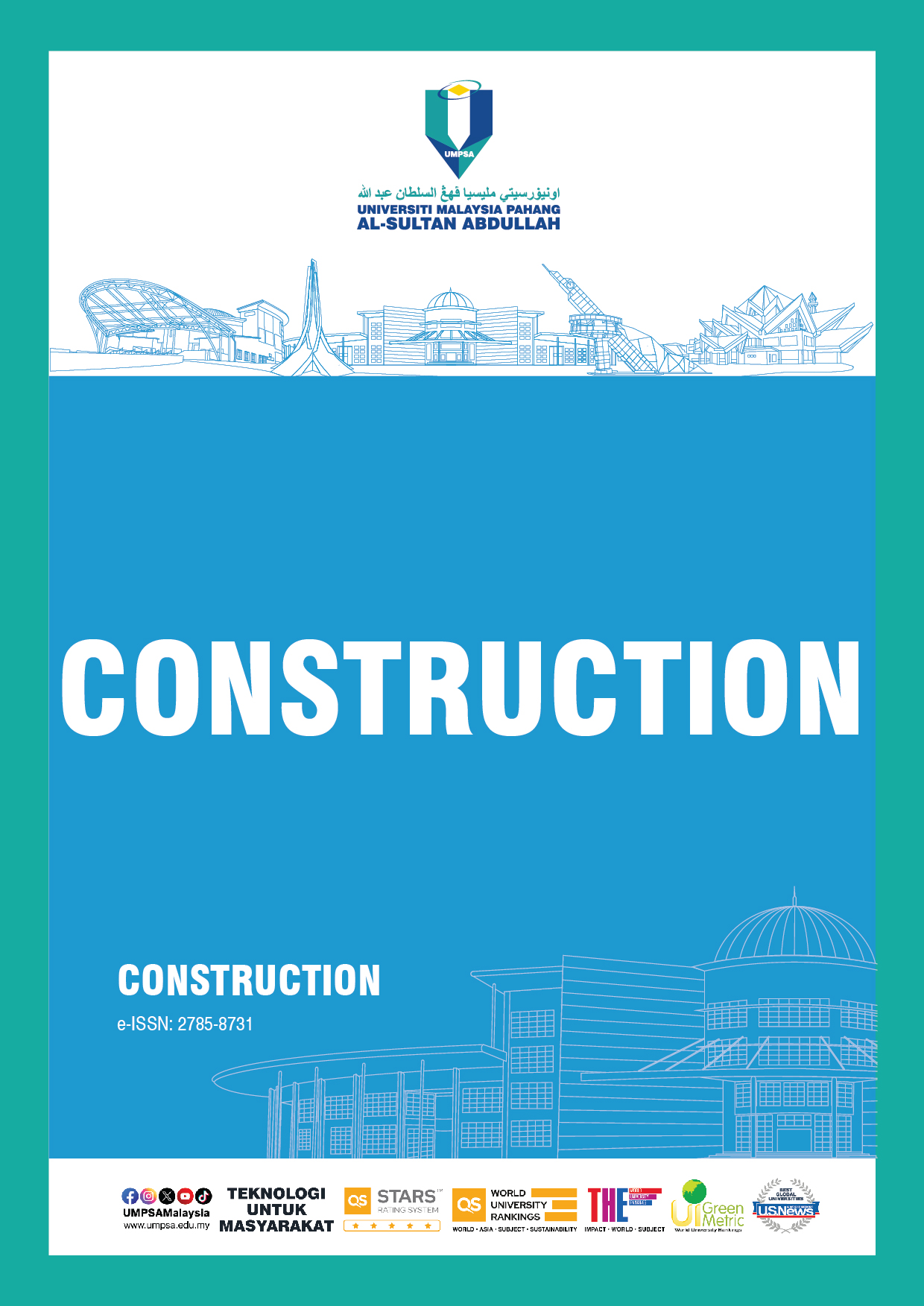The Integration of Critical Risk with Building Information Modelling Application Strategies in Building Refurbishment Project Lifecycle
DOI:
https://doi.org/10.15282/construction.v3i2.9670Keywords:
Building refurbishment project, Building Information Modelling (BIM) application strategeis, Critical risk, Performance improvementAbstract
Building refurbishment project has rapidly becoming a significant part of the construction industry in Malaysia. Refurbishment projects are typically higher risk, more complex, and require more coordination than new construction projects. Therefore, the aim of this research is to establish the integration of critical risk with Building Information Modelling (BIM) application strategies for building refurbishment project lifecycle improvement. This study is conducted through a quantitative method using the questionnaire which is distributed by employing a self-administrated approach as a research medium to obtain feedback from contractor grade 7 (G7) from construction organization who are registered with Construction Industry Development Board (CIDB) Malaysia. As a result, 96.5 percent of the response rate are accepted. The analysis shows that the integration of critical risk with BIM application strategies is recognized as important factors and strategies towards building refurbishment projects lifecycle improvement and found that the mean is in very high range. Additionally, the results indicate that the level of critical risk and BIM application strategies have been measured through descriptive analysis. The findings of this study are expected to establish a foundation for future research in order to develop an adequate framework for managing building refurbishment projects and improve the quality of decision making among the building industry professionals.
Downloads
Downloads
Published
Issue
Section
License
Copyright (c) 2023 The Author(s)

This work is licensed under a Creative Commons Attribution-NonCommercial 4.0 International License.




